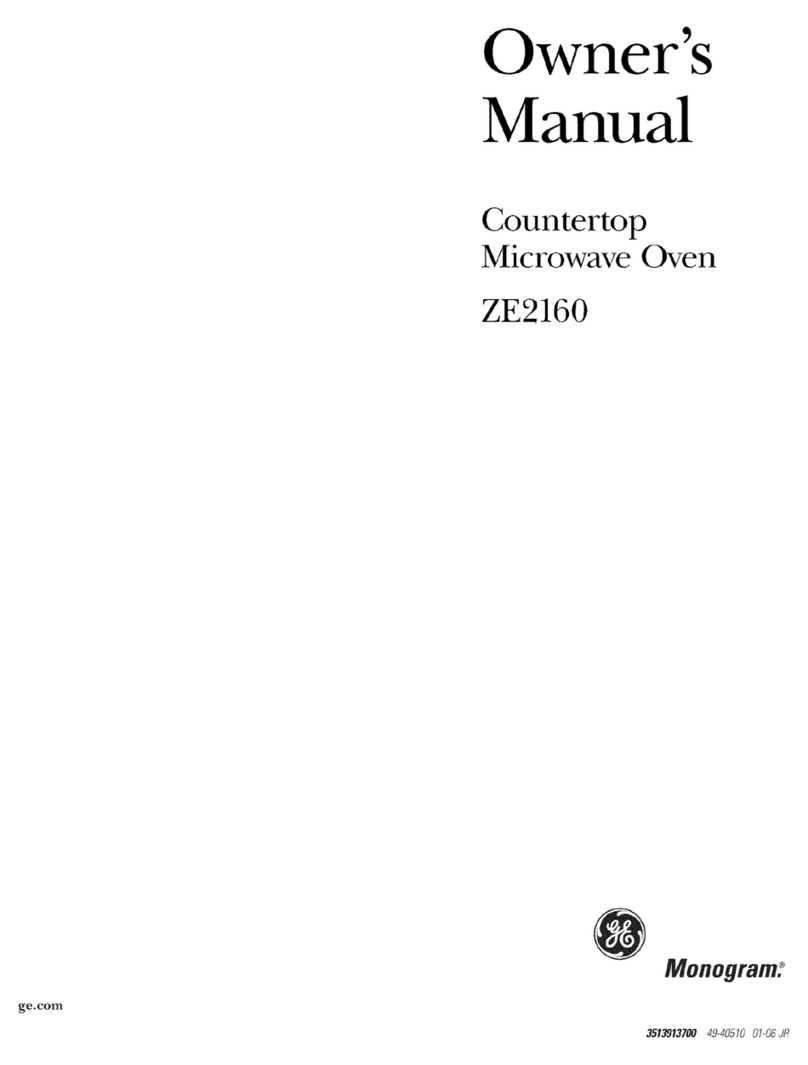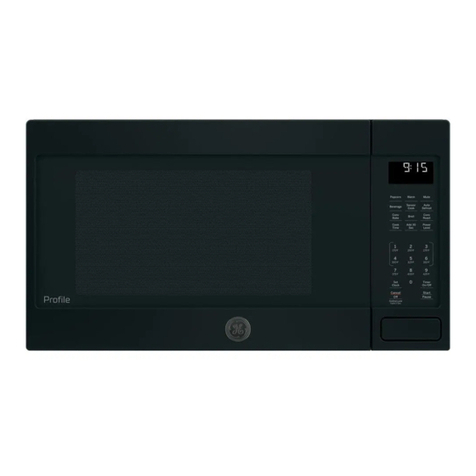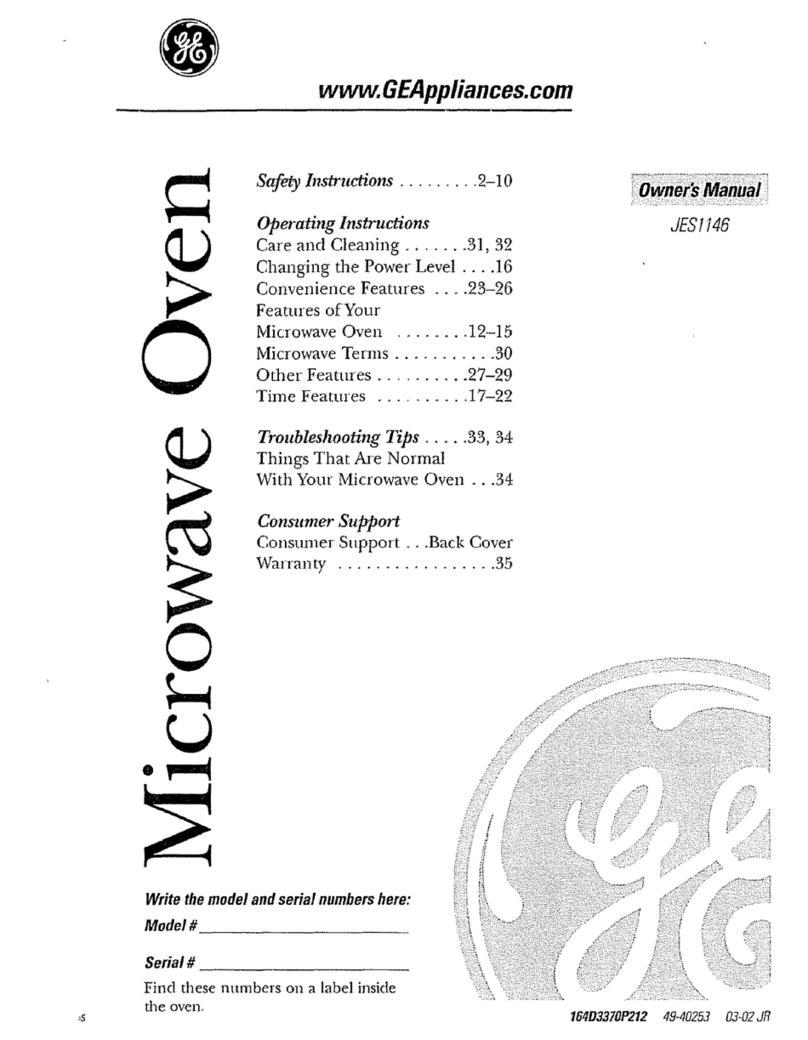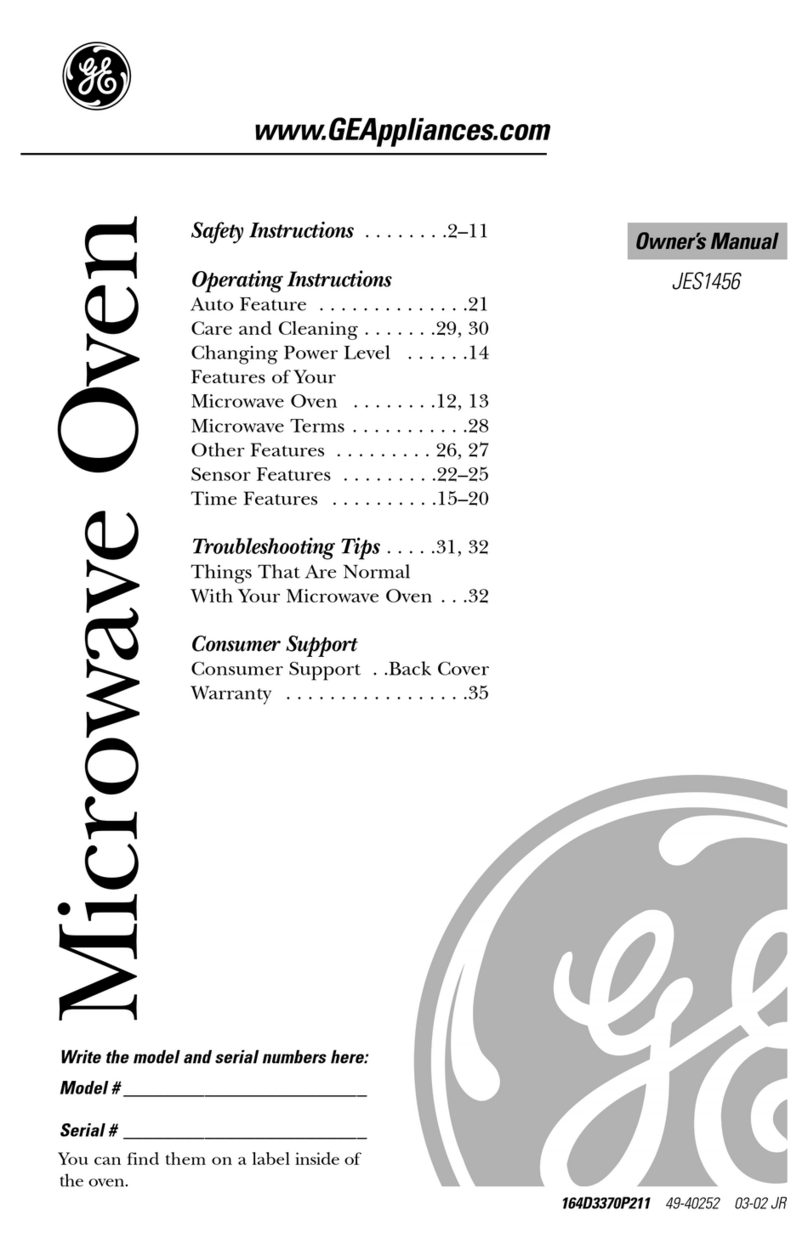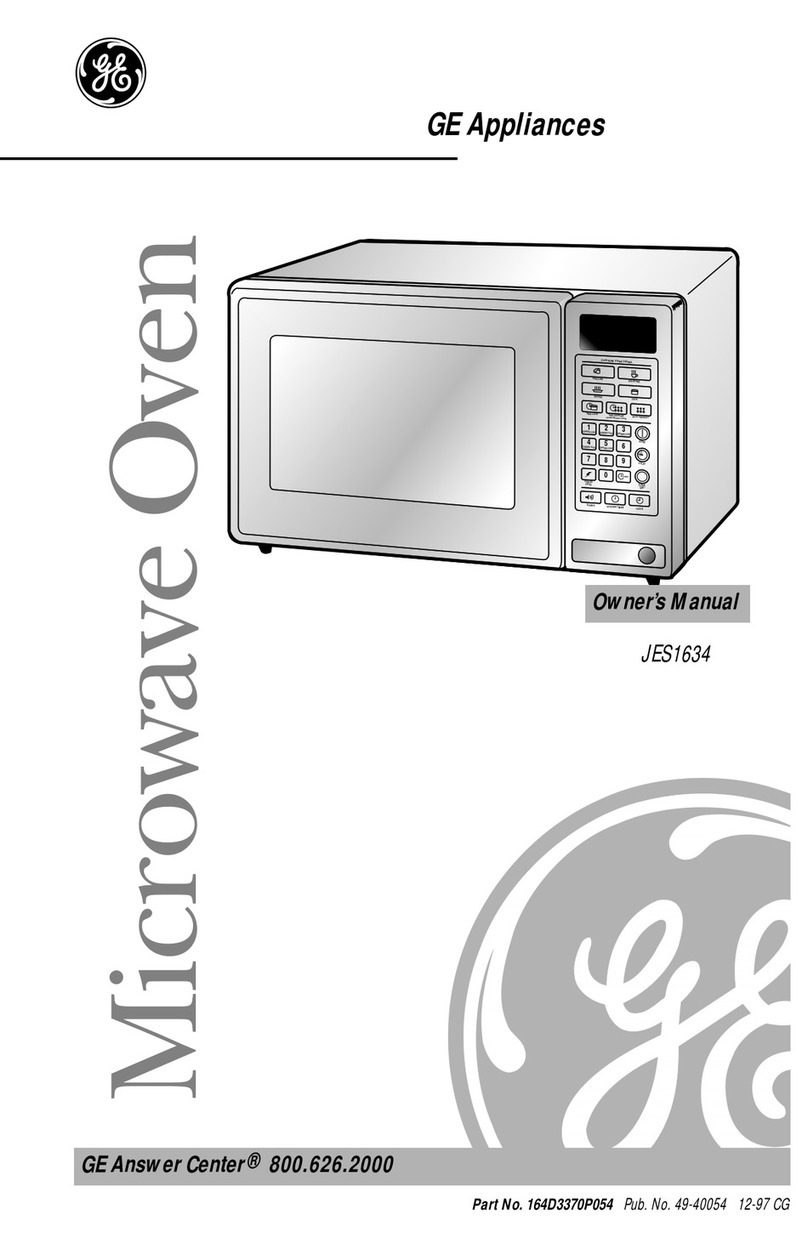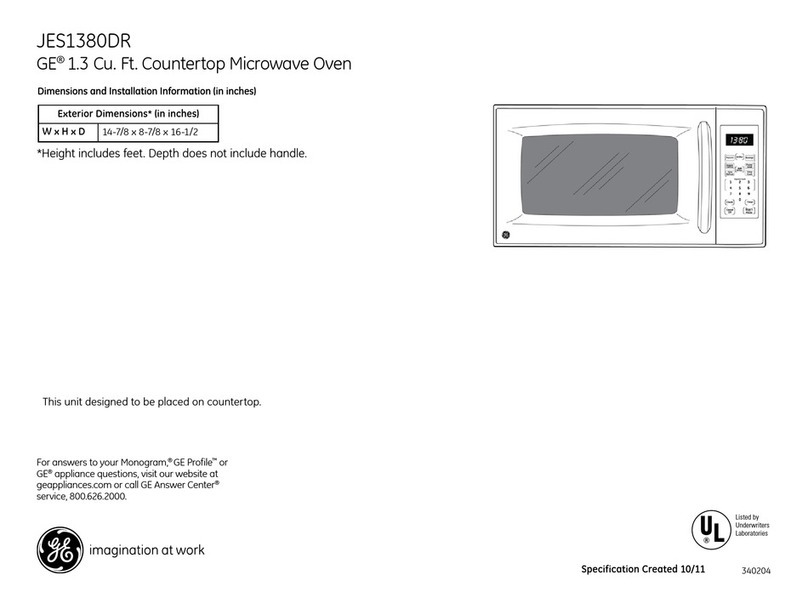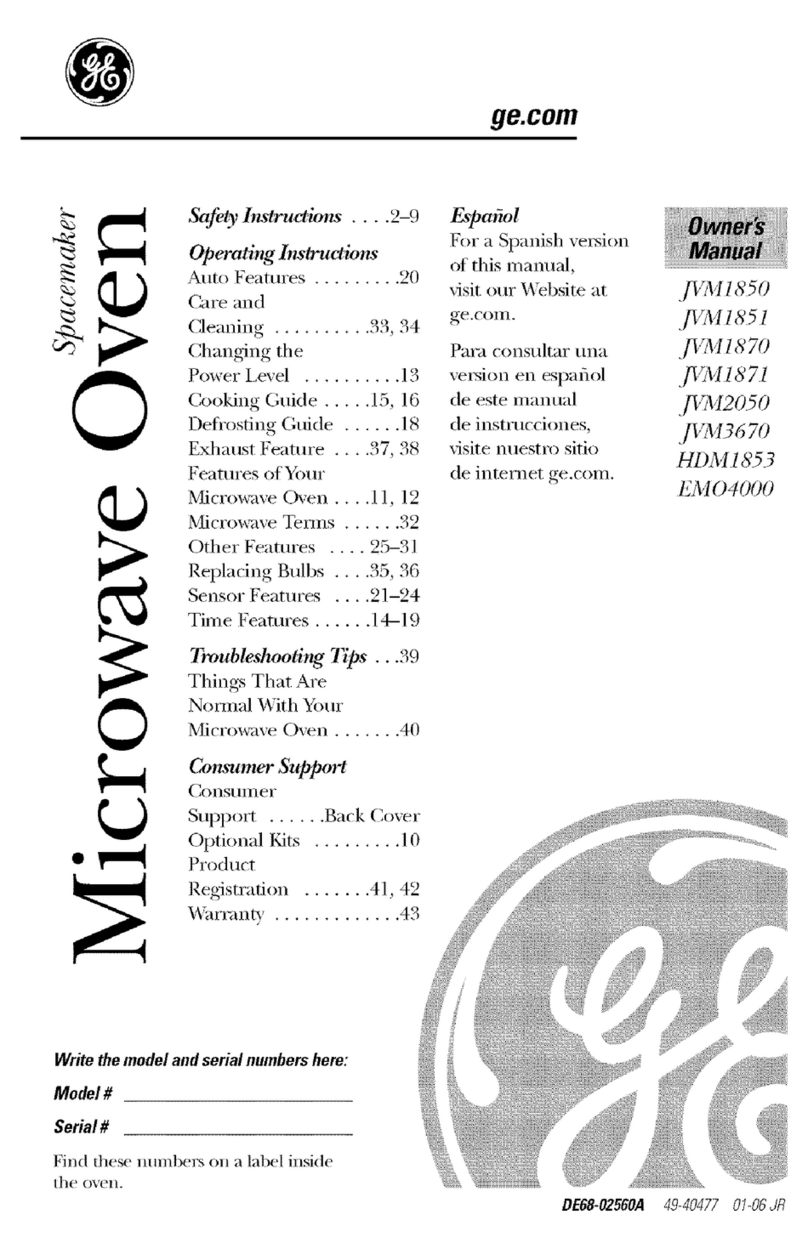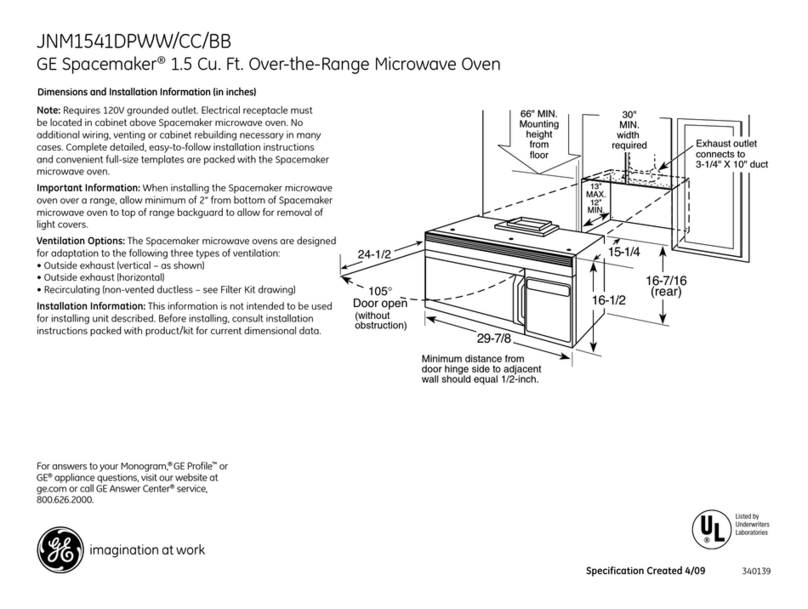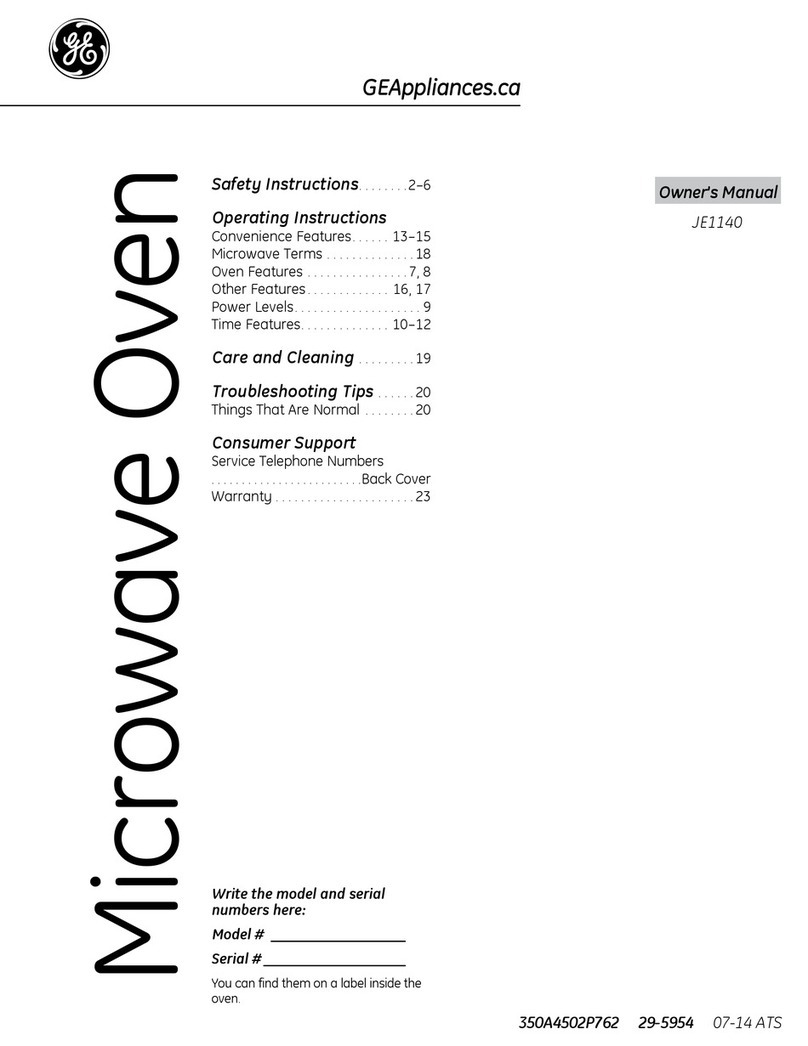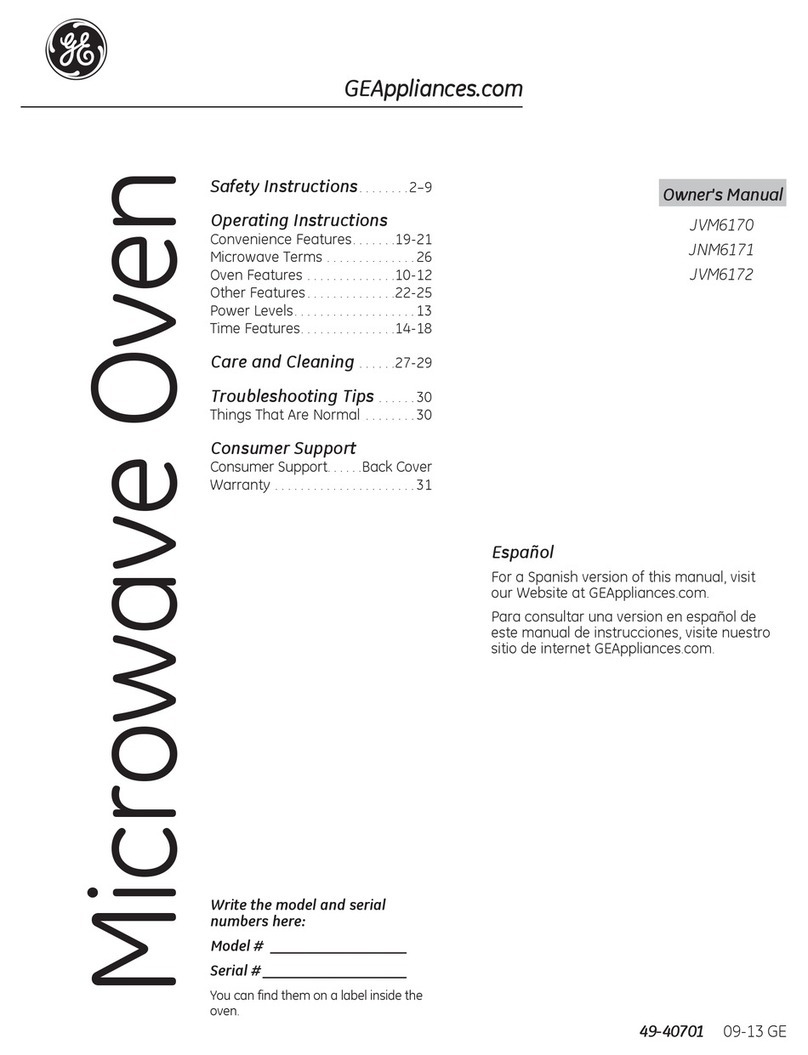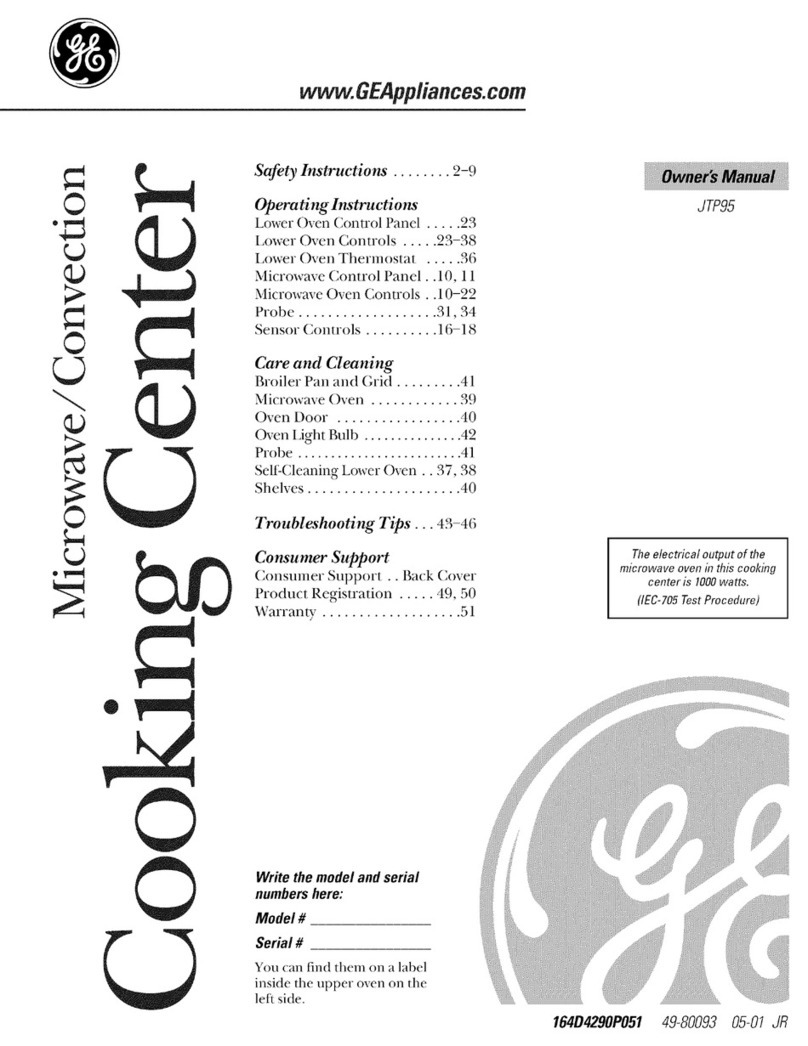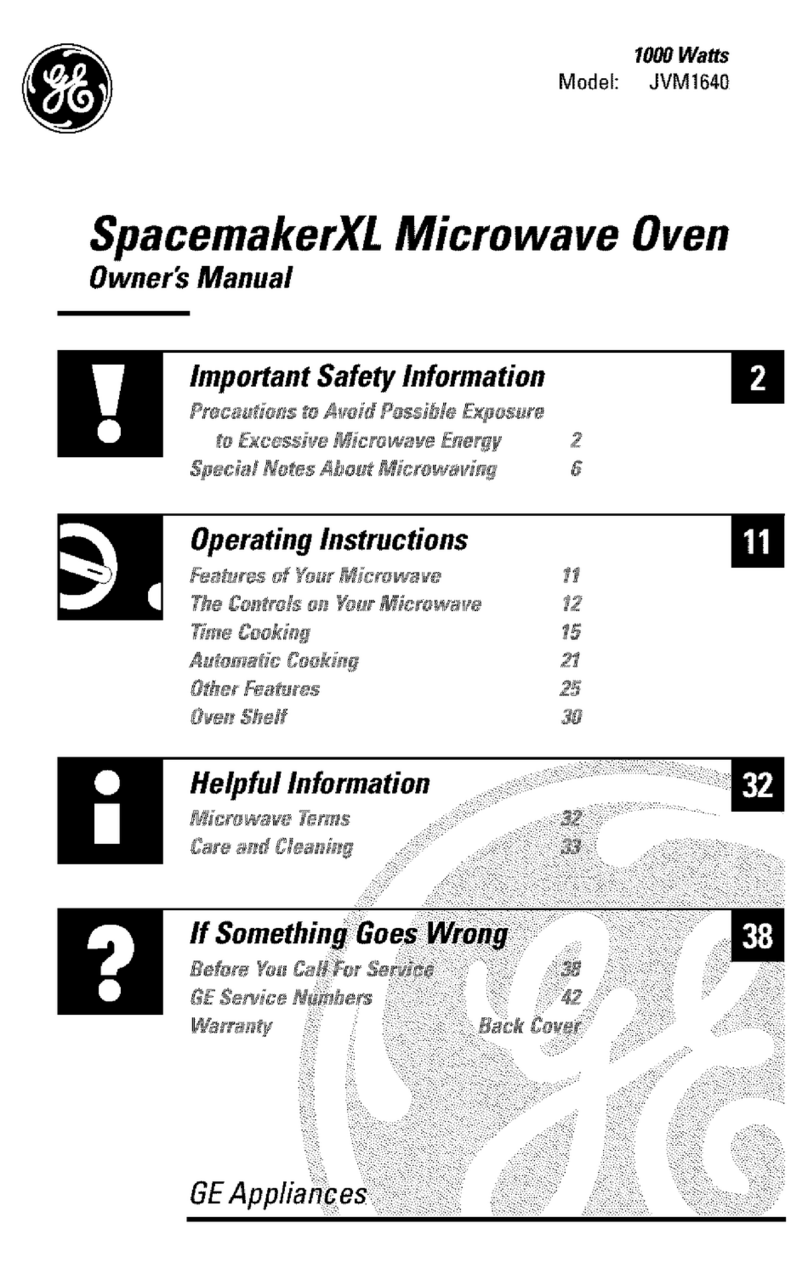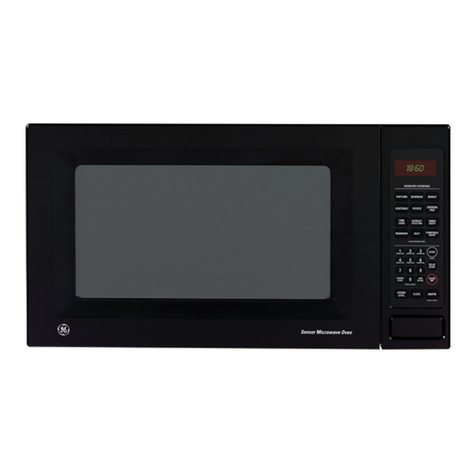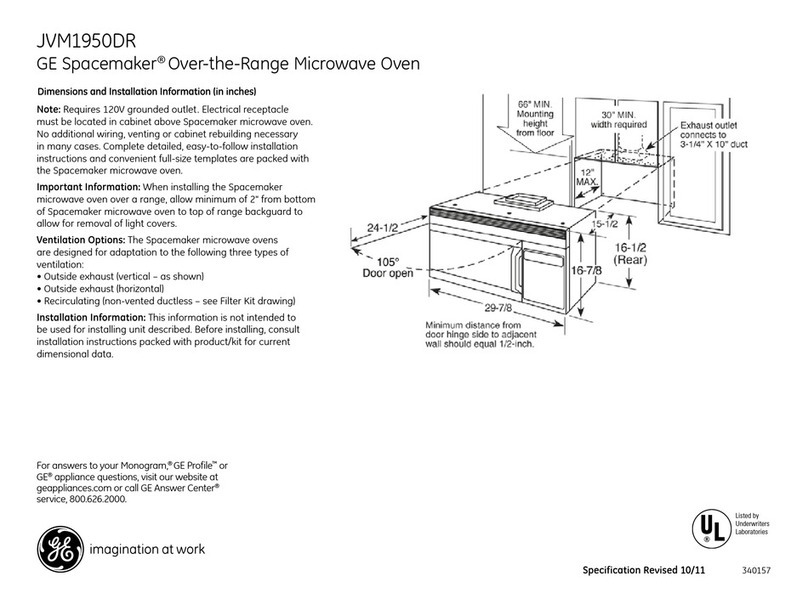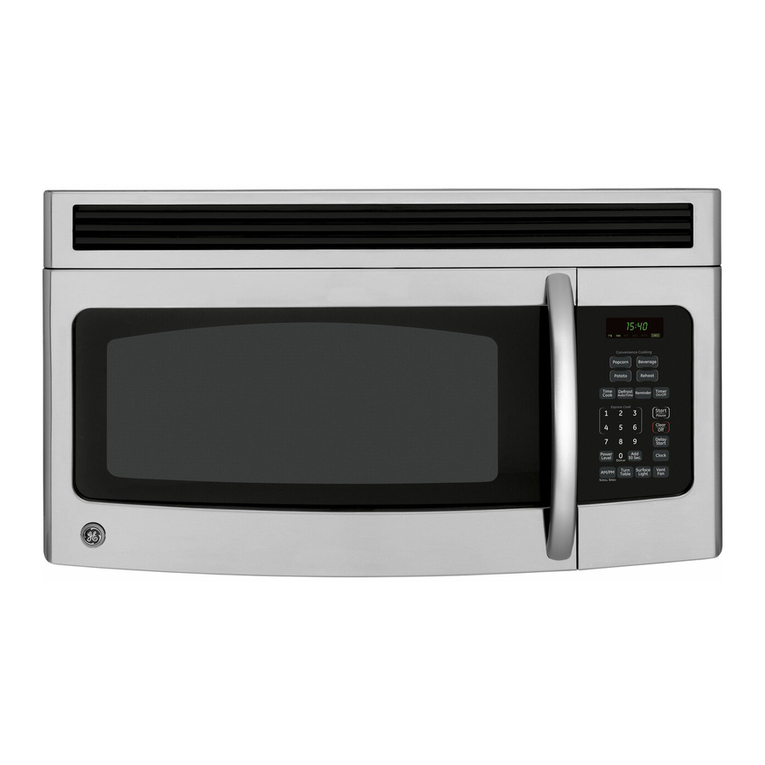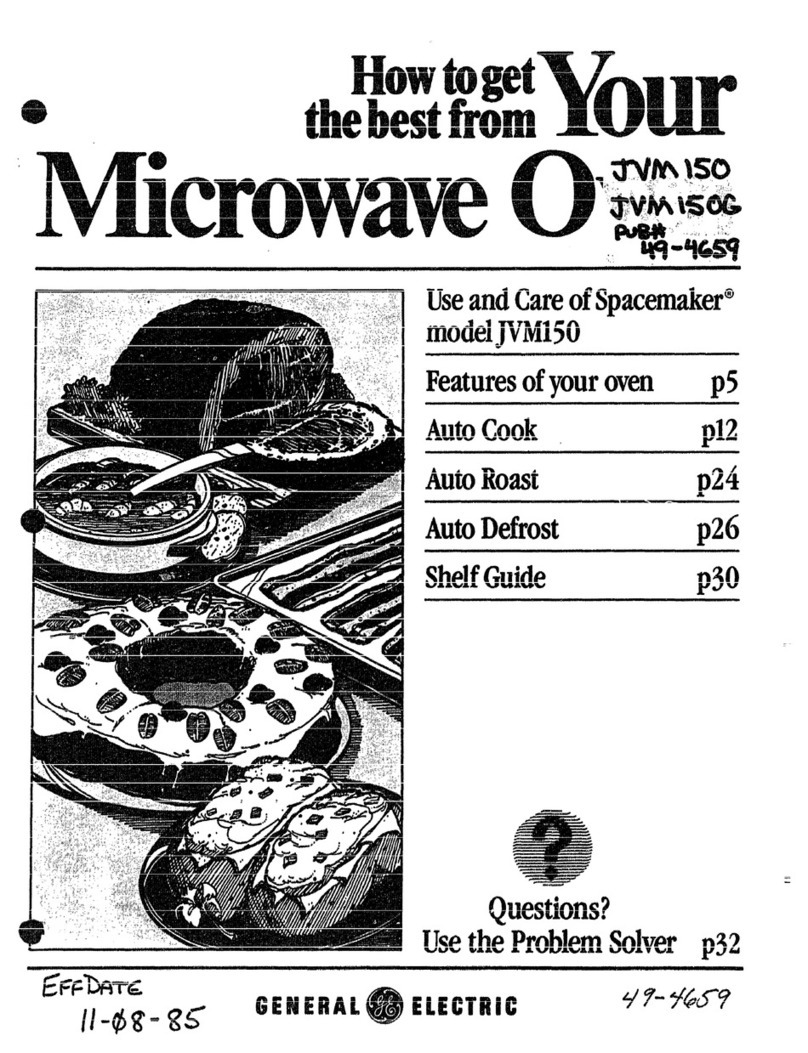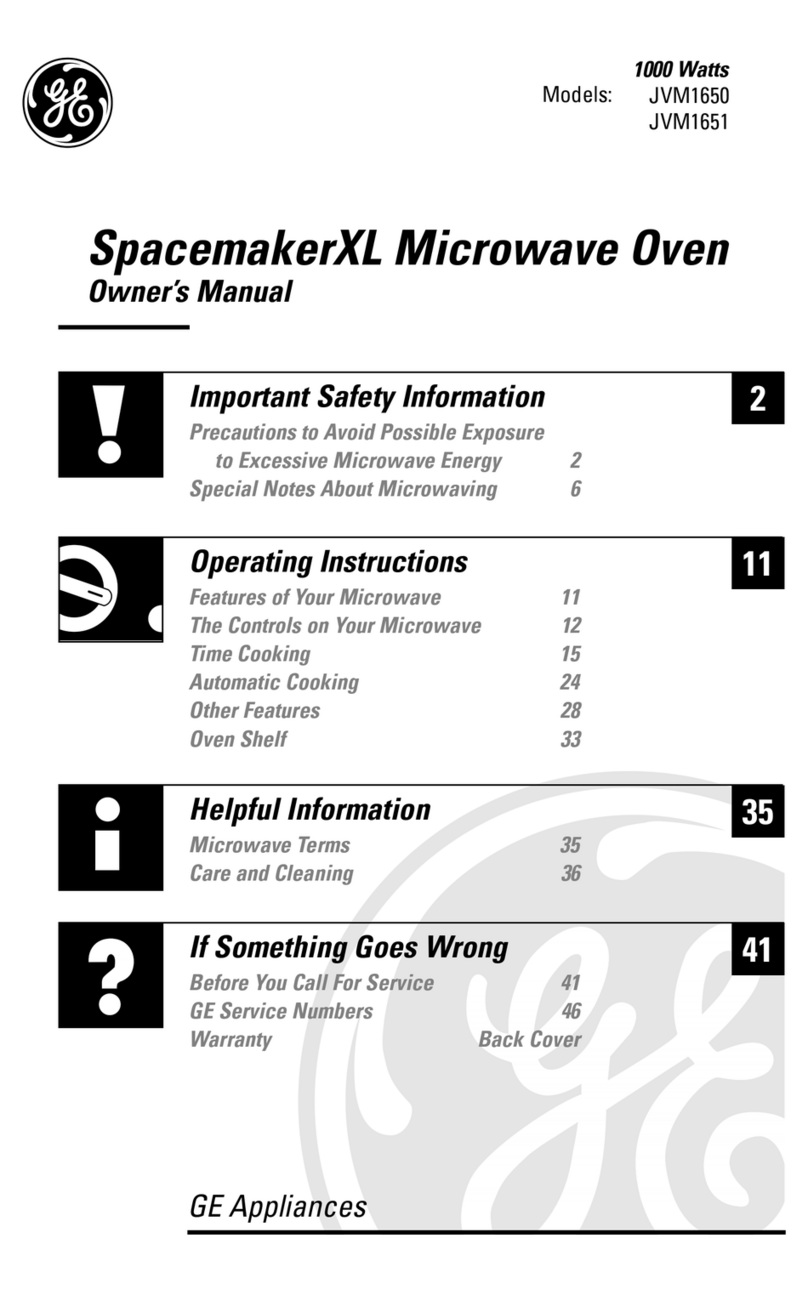YOUR TOUCH CONTROL
PA~L
The Touch Control Panel allows you to set the oven controls with the
touch of a finger. It’s designed to be easy to use and understand.
1.
2.
3.
4.
5.
6.
7.
8.
9.
DISPLAY.
Displays time of day, time counting
down during cooking functions, power level,
cooking mode and instructions.
TIME DEFROST. Gentle thawing at automatic
power level 3 (Low).
TIME COOK I & II. Microwave for a selected
amount of time using automatic power level 10
(High).
POWER LEVEL. Touch this pad after you enter
the cooking time if you want to change from
automatic power level 10 (High).
MIN/SEC TIMER. This feature uses no
microwave energy. It functions as a kitchen timer,
as a holding period after defrost or as a delay
timer before time cooking.
AUTO COOK. Touch this pad, the number
pad for the desired code number, then START.
The oven automatically microwaves at
pre-programmed power levels and determines
the proper amount of cooking times until food
is done and oven shuts off.
POPCORN. Touch this pad, then START to cook
prepackaged microwave popcorn weighing 3.0 to
3.7 ounces.
NUMBER PADS. Touch these pads to enter
cooking/defrosting time, power level and time
of day.
ADD 30 SECONDS. Press this pad to add 30
seconds to the cook time as it’s counting down.
When You Plug in the Oven
The display panel lights up. After 15 seconds, all
lights disappear and “RESET” appears. Touch the
CLEAWOFF pad and oven is ready for use and the
clock can be set.
If power is disrupted at any time, the above sequence
recurs and you must reset clock after touching
CLEAWOFF.
10.
AUTO START~EMINDER.
Allows
YOU
to program your oven to begin cooking at a
later time of day—up to a 12-hour delay. The
Reminder feature can be used like an alarm clock.
11. START. After all selections are made, touch this
pad to start oven.
12. AUTO DEFROST. Touch this pad and food
weight, then START. The oven automatically sets
power levels and defrosting time.
13. CLOCK. Touch this pad to enter time of day or
check time of day while microwaving.
To set clock, first touch CLOCK pad and then
enter time of day. For example, if time is
1
:30,
touch number pads 1, 3, and O and
“1:30”
will
appear in display. Then touch START or CLOCK
pad. To reset or change time, simply repeat
this process.
14. AUTO REHEAT. Touch this pad, then START
for quick reheating of prepared foods.
15.
EXPRESS COOK.
Touch the number 1 through
5 pads for 1 to 5 minutes of cooking at power level
10. For example, touch 2 then START for
2 minutes at power level 10.
16. MINUTE. Use with number pads to enter whole
minutes. For example, for 4 minutes touch 4
and MINUTE.
17. CLEAWOFF. When touched, it shuts off the
oven and erases all settings (except time of day).
Program
Cooking
Use your Touch Control Panel to Time Defrost
or Time Cook with choice of power levels from
1 (lowest) to 10 (highest); to time kitchen tasks
with the Minute/Second Timer; and to set the clock.
Create your own programs to suit your individual
cooking style. For example: use the Minute/Second
Timer to delay the start of Time Cook I & II or
program a hold time between Time Defrost and Time
Cook I & II. Set Time Cook I & 11 for a two-stage
program using different times and power levels.
6
